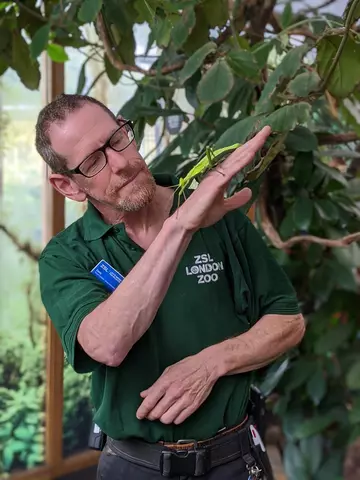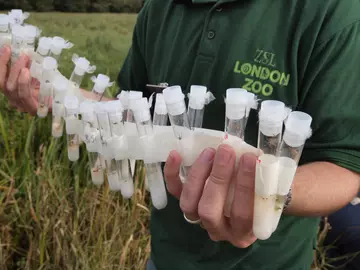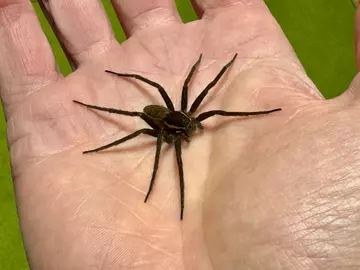
Written by Dave Clarke, ZSL Ectotherms Curatorial Lead, Terrestrial Invertebrates
(the spiderman curing your fears of eight-legged arachnids)
Dave Clarke has been working at ZSL for over 40 years and heads up the Friendly Spider Programme which focuses on curing people of their phobias of spiders through an afternoon session at London Zoo. Via hypnotherapy, CBT and advice from a spider conservationist about the importance of their role in our environment, Dave – our very own ‘spiderman’ has a 90% success rate in curing people of their fears of spiders.

A recent announcement by the RSPB was intended to celebrate the success of increasing Fen raft spider populations in the wild in East Anglia, as one of Britain’s rarest spider species makes a comeback.
However, news headlines were awash with sensationalist claims about “rat-sized spiders” invading the UK, which quickly took social media by storm. But how much of this news coverage truly reflects reality?
Amidst the attention-grabbing headlines, there is a seriously positive story hidden, and we, at London Zoo, have a strong link to this success.
Rearing Fen raft spiders
From 2011 to 2013, we joined other BIAZA (British and Irish Association of Zoos and Aquariums) zoos in rearing Fen raft spiders (Dolomedes plantarius) for later release.
We were given hundreds of tiny newly hatched spiderlings in test tubes, carefully tended and fed them for a few months to give them a greater chance of survival, then they were released into new suitable wetland areas to increase their distribution. Before this, Helen Smith of Natural England was rearing thousands of spiderlings just in her kitchen.

The introductions were so successful that Fen raft populations flourished outside of the zoos. We have continued to boost Fen raft numbers have increased by translocating some spiders to new areas, and now - as the data behind the RSPB’s announcement shows - they are spreading very effectively on their own.
Our continued involvement with conservation
We have maintained our link with this iconic species. In 2015, we set up the world’s only Fen raft spider exhibit to illustrate the story in our innovative “In with the Spiders” display, and have kept a zoo population ever since.
Come and see them at Tiny Giants
Last September, my son Arthur and I were also lucky enough to join the wild surveys at Mid Yare in Norfolk, so contributed to these newly publicised totals.
To see the descendants of our released animals, having been involved in the 2012 reintroductions to this site, was a career highlight.

So, why ‘rat-sized’? Good question!
They are one of our biggest spiders, but, at best, the stretched out leg span (not, importantly, body size) could be described as the width of a human palm - typically 65-70mm. This is easily reported as ‘the size of a man’s hand’ or maybe ‘the length of a newborn rat’, which then becomes a widely adopted model of comparison.

At London Zoo, we often use comparisons ourselves for descriptions rather than actual measurements, as it is easier for the public to understand, but it is fraught with danger and misinterpretation.
At a (literal) stretch, did ‘length of a newborn rat’ get expanded to ‘rat-sized’? This myth appears to have first emerged several years ago and, as frustrating as persistent misinformation is for those working in wildlife conservation, this Fen raft spider story has ended up having far greater reach (or longer legs, if you like…) than otherwise might have been the case.
Of course, there is also nothing to fear from increased numbers of spiders. This is a huge conservation success, both for the spiders and the wider habitat restoration driving the success. And more natural biocontrols out there (even if this species is never coming into human areas) are only a good thing.
Misinformation like this just fuels people’s arachnophobia, and our own Friendly Spider Programme to ease or eliminate arachnophobia is already fully booked for the year!
Responsible reporting is absolutely crucial to the conservation of spider species and conservation science more broadly. Fearmongering can distort public perceptions, leading to unnecessary fear and hostility toward species that are vital to the strength of our ecosystems. That’s why it’s vital we are as accurate and measured with how we communicate, checking with our own experts, whilst still trying to grab our share of attention in a crowded world.
Now, if you do want to see a truly large spider, check out our Salmon-pink bird-eater at Tiny Giants… she really is more worthy of the “rat-sized” title…
